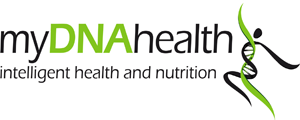Are cruciferous vegetables a superfood?
When a new piece of research comes out on a specific food and its health benefits, the first thing that the media will do is to mention the term superfood. But what do they mean by superfood? Do they imply it contains a wide range of essential vitamins and nutrients that can promote a healthy wellbeing?
myDNAhealth asked Federico Bernuzzi who is currently doing a PhD in Molecular Nutrition at the Quadram institute in Norwich to answer this question. Federico’s research focuses on understanding how broccoli is good for us. Although he says he wouldn’t necessary call cruciferous vegetables superfoods, they are definitively important vegetables that the British population should be consuming more of.
Cruciferous vegetables include a wide range of vegetables. The most common ones are the following: broccoli, cauliflower, different forms of cabbage, Brussel sprouts, kale, swede, turnip and even rocket. These vegetables are rich in molecules known as glucosinolates; compounds that the plant produces to defend itself against diseases and pests (Traka & Mithen, 2008).
[intense_image image=”8893″ size=”medium” align=”right” title=”broccoli”]
The special feature of glucosinolate is that they are formed by sulphur atoms. Have you ever stopped and considered what is that awful smell when you are cooking cauliflower, broccoli and cabbage? It is exactly the sulphur molecules in the glucosinolates that are being broken down.
It turns out the human body is not able to metabolise these glucosinolates. Instead the collection of microorganisms in our gut known as the gut microbiota does that job for us. A specific community of these microorganisms that can produce a specific set of enzymes known as myrosinase, convert these glucosionlates to molecules known as isothiocyanates. These isothiocyanates are the active substances of the plant. In fact, these isothiocyanates play an important role in maintaining our health (Traka & Mithen, 2008).
Glucoraphanin is the glucosinolate found in broccoli. In our digestive system it is converted to an isothiocyanate called sulforaphane (SF). SF helps to reduce inflammation. One way it does so is by switching on genes involved in fighting inflammation. For example, SF and potentially other isothiocyanates can increase the levels of glutathione in the body. Glutathione has been associated as a “master antioxidant” (ZHANG & CALLAWAY, 2002).
Additional health benefits of cruciferous vegetables
Over the past couple of years, the Quadram Institute (formerly known as Institute of Food Research) has been carrying out small-scale human intervention trials in men with an increased risk of developing prostate cancer. In these studies, men were split into two groups: one received a 400g portion of a broccoli soup high in glucoraphanin. The control received a standard broccoli soup. This broccoli high in glucoraphanin have been specifically designed and grown to have 2-3 times higher concentration of glucosinolates compared to the normal broccoli you would find in the supermarket.
[intense_image image=”8907″ size=”medium” align=”left” title=”cruciferous vegetables, cauliflower,broccoli, Brussels sprouts,” caption=”cruciferous vegetables, cauliflower,broccoli, Brussels sprouts, kale in wooden bowl, reducing estrogen dominance, ketogenic diet”]
The first study showed that the group consuming the broccoli high in glucoraphanin had an increase in GSTM1 expression. GSTM1 is the most biologically active member of the Glutathione S-transferase gene super-family and is responsible for the removal of xenobiotics, carcinogens and products of oxidative stress. The increase in GSTM1 expression in turn resulted in genes involved in inflammatory pathways associated with cancer development in the prostate being switched off (Traka et al., 2008).
A further study published in 2015 showed that a diet rich in high glucoraphanin saw an average six percent reduction in LDL cholesterol after 12 weeks (Armah et al., 2015) .
A recent human intervention study published in 2017 showed that obese and type 2 diabetes (T2D) individuals supplemented with SF from broccoli sprout extract SF was as effective as the commonly prescribed metformin drug in reducing blood sugar level (Axelsson et al., 2017). However, further research is needed to investigate the underlying mechanism and whether consuming broccoli is an effective treatment to prevent T2D.
What is the best way to cook these vegetables?
When cooking cruciferous vegetables, the general rule is lightly cook them and cook them as briefly as possible. Avoid boiling as that will destroy all the glucosinolates. For example, add broccoli to a pan with a tablespoon of olive oil, two cloves of garlic, just enough water to prevent the broccoli from sticking, add some spices to season and put the lid on and cook for about ten minutes. But there are so many ways. If you are preparing a stew for example, then 10 minutes before the stew is ready add in some chopped broccoli or cauliflower. Some vegetables such as cabbage and swede may need longer to cook.
In conclusion, despite the many health benefits of broccoli and other cruciferous vegetables, Federico would not call these vegetables superfoods. In addition to the glucosinolates, broccoli is also high in fibre and is a good source of vitamins C and K. It is also rich in folate and calcium.
About the author
[intense_image image=”8904″ size=”thumbnail” align=”left” title=”fred”]Federico Bernuzzi, Year 2 PhD in Molecular Nutrition (Quadram Institute), MSc in Biostatistics, BSc in Biochemistry.
Federico is completing a PhD at the Food and Health department of the Quadram Institute of Biosciences where he is researching how diet affects metabolic health. He has experience of laboratory techniques, along with an advanced knowledge of statistics and analysing scientific data.
He completed a Professional Internship for PhD students with myDNAhealth undergoing genetics and epigenetics research.
References
- Armah, C. N., Derdemezis, C., Traka, M. H., Dainty, J. R., Doleman, J. F., Saha, S., … Mithen, R. F. (2015). Diet rich in high glucoraphanin broccoli reduces plasma LDL cholesterol: Evidence from randomised controlled trials. Molecular Nutrition & Food Research, 59(5), 918–926. https://doi.org/10.1002/mnfr.201400863
- Axelsson, A. S., Tubbs, E., Mecham, B., Chacko, S., Nenonen, H. A., Tang, Y., … Rosengren, A. H. (2017). Sulforaphane reduces hepatic glucose production and improves glucose control in patients with type 2 diabetes. Science Translational Medicine, 9(394). Retrieved from http://stm.sciencemag.org/content/9/394/eaah4477.abstract
- Dunna, N. R., Vure, S., Sailaja, K., & Surekha, D. (2013). Deletion of GSTM1 and T1 Genes as a Risk Factor for Development of Acute Leukemia, 14, 3–6.
- Fowke, J. H., Chung, F.-L., Jin, F., Qi, D., Cai, Q., Conaway, C., … Zheng, W. (2003). Urinary Isothiocyanate Levels, Brassica, and Human Breast Cancer. Cancer Research, 63(14), 3980 LP-3986. Retrieved from http://cancerres.aacrjournals.org/content/63/14/3980.abstract
- Joseph, M. A., Moysich, K. B., Freudenheim, J. L., Shields, P. G., Bowman, E. D., Zhang, Y., … Ambrosone, C. B. (2004). Cruciferous Vegetables, Genetic Polymorphisms in Glutathione S-Transferases M1 and T1, and Prostate Cancer Risk. Nutrition and Cancer, 50(2), 206–213. https://doi.org/10.1207/s15327914nc5002_11
- KJ, J., Ascherio, A., JE, M., & al, et. (1999). Fruit and vegetable intake in relation to risk of ischemic stroke. JAMA, 282(13), 1233–1239. Retrieved from http://dx.doi.org/10.1001/jama.282.13.1233
- Lin, J., Kamat, A., Gu, J., Chen, M., Dinney, C. P., Forman, M. R., & Wu, X. (2009). Dietary Intake of Vegetables and Fruits and the Modification Effects of GSTM1 and NAT2 Genotypes on Bladder Cancer Risk. Cancer Epidemiology Biomarkers &Amp; Prevention, 18(7), 2090 LP-2097. Retrieved from http://cebp.aacrjournals.org/content/18/7/2090.abstract
- Traka, M., Gasper, A. V, Melchini, A., Bacon, J. R., Needs, P. W., Frost, V., … Mithen, R. F. (2008). Broccoli Consumption Interacts with GSTM1 to Perturb Oncogenic Signalling Pathways in the Prostate. PLOS ONE, 3(7), e2568. Retrieved from https://doi.org/10.1371/journal.pone.0002568
- Traka, M., & Mithen, Æ. R. (2008). Glucosinolates , isothiocyanates and human health, (February). https://doi.org/10.1007/s11101-008-9103-7
- Yang, H., Yang, S., Liu, J., Shao, F., Wang, H., & Wang, Y. (2015). The association of GSTM1 deletion polymorphism with lung cancer risk in Chinese population: evidence from an updated meta-analysis. Scientific Reports, 5, 9392. https://doi.org/10.1038/srep09392
- ZHANG, Y., & CALLAWAY, E. C. (2002). High cellular accumulation of sulphoraphane, a dietary anticarcinogen, is followed by rapid transporter-mediated export as a glutathione conjugate. Biochemical Journal, 364(1), 301 LP-307. Retrieved from http://www.biochemj.org/content/364/1/301.abstract

